January 5, 1952
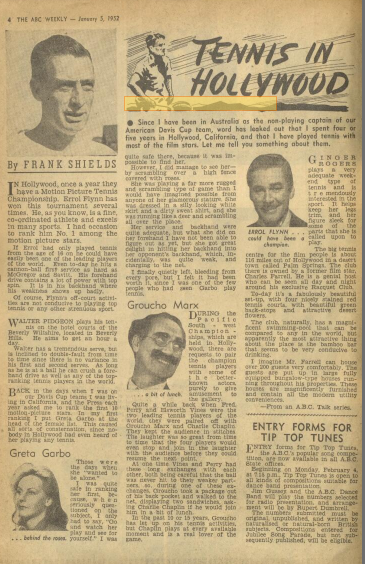
— Tim
February 3, 1938
Louella O. Parsons
Los Angeles Examiner
The commotion on the Gold Diggers in Paris set at Warner’s yesterday was caused by the chorines teaching Errol Flynn The Big Apple.*
…
This film’s “chorines” can be seen, beginning at 2:00 in the film’s ‘Latin Quarter’ video below. But first The Big Apple!
History of The Big Apple
…
La Gran Manzana
youtu.be/vMINXFHWmhc…
…
Mickey Does The Big Apple
youtu.be/XzlFsm11F-w…
…
The Latin Quarter – See the film’s chorines at 2:00 >
…
— Tim
February 1
He was a close friend of Franklin and Eleanor.
His name is sometimes brought up in connection with Errol’s.
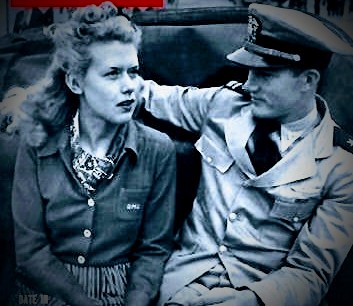
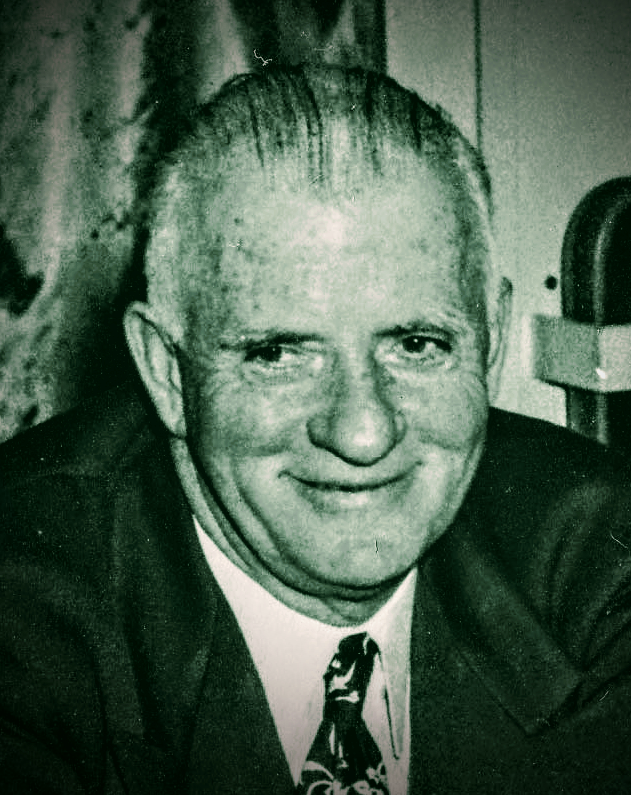
— Tim
January 30, 1937
Premire of The Good Earth
Joan Crawford with Franchot Tone..
Surprise arrrival of the evening was this.. Lili Damita with Bruce Cabot!
Miss Data has been reported reconciled with Errol Flynn, and Cabot reconciled with Adienne Ames.
…
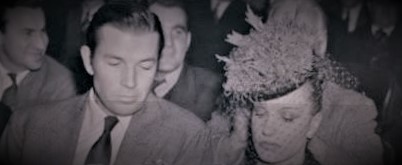
Bruce Cabot and Tiger Lil’ circa the World Premier of The Good Earth
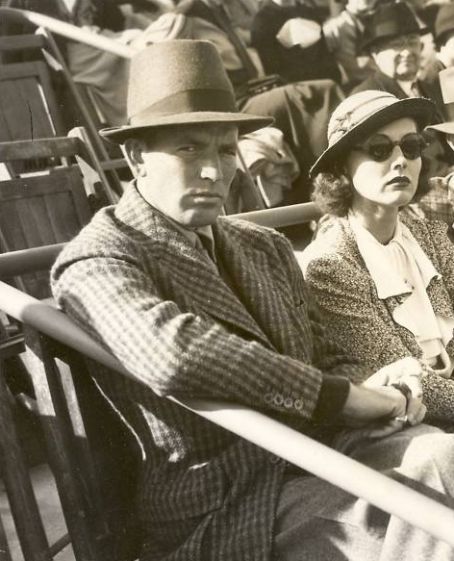
Bruce Cabot and his wife, Adrienne Ames, apparently having a not-so-happy day at the track
…
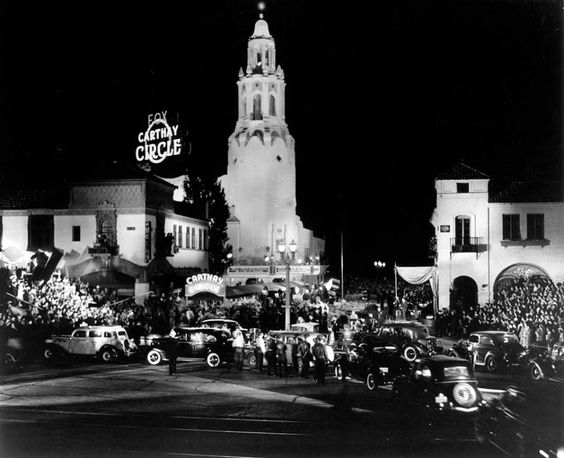
“The film’s premiere took place in Los Angeles at the Carthay Circle Theatre on 29 Jan 1937, followed by a New York premiere at the Astor Theatre on 2 Feb. News items reported extensive preparations for both premieres, especially in Los Angeles where art director associate Harry Oliver supervised the decoration of San Vicente Blvd. (the street on which the Carthay Circle Theatre was located) in a Chinese style. A fifty-foot replica of the novel was also constructed on a corner of the intersection of Wilshire and San Vicente Blvd. near the theater. Prominent writers P. G. Wodehouse, Rupert Hughes and Jim Tully were present at the premiere to write impromptu reviews and immediately send them across the nation via wire service. The premiere was broadcast over radio via the Mutual System and, according to a 29 Jan 1937 HR news item, was the first premiere to be covered on a national network.”
So it might have been broadcast nationwide that Lili attended with Cabot?
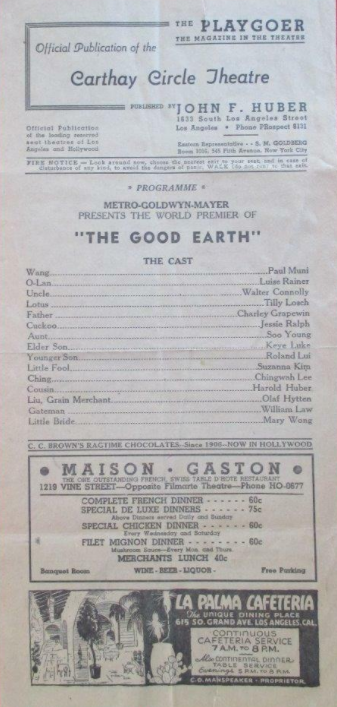
Photos including Bruce Cabot above are from the approximate timeframe of The Good Earth World Premiere, but not from the premiere
— Tim
January 29, 1939
Dinner and a Play with FDR and Errol Flynn
7:45pm – 8:50pm: Dinner at the White House with ER, Household, Errol Flynn, Miss Malvina Thompson, Mrs. Helm
8:50pm – 11:10pm – “Outward Bound” at the National Theater with ER, James Roosevelt, Jr., Errol Flynn, Marguerite A. LeHand , Miss Malvina Thompson, Mrs. Helm, Miss Connochie, Miss Henderson, Mr. and Mrs. Hendrik van Loon
“Tonight all of us are going to see: “Outward Bound.” I have no fear about the evening, for I know that the play, as well as the cast, is among the finest in the theatre today. We are deeply appreciative of the generosity of the cast. They have come down from New York City to give this performance at their own expense for the benefit of the Infantile Paralysis Fund.” – Eleanor Roosevelt
“All of our guests last night sang “Happy Birthday” to the President just as the clock struck midnight, which was a nice beginning for his birthday. All the young movie stars are here today to help him celebrate his birthday by making the birthday balls a success throughout this city.” – Eleanor Roosevelt
This is a play program for President Roosevelt’s birthday celebration in association with The Playhouse Company and the National Theatre Directors. A command performance of “Outward Bound” by Sutton Vane. Directed by Otto Preminger and staring some of the greats like Laurette Taylor, Florence Reed , Helen Chandler and Vincent Price. Preformed at the National Theatre, Washington, D.C. on Sunday evening, January 29, 1939. — with Errol Flynn as a special guest of the President.
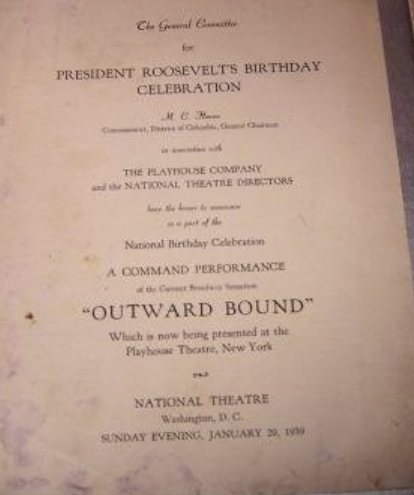

………………………………………………………………………………………………………………..
Birthday Boy Biden Born When FDR was President and Errol Flynn Ruled in Hollywood
When Joe Biden was born, World War II raged. Franklin D. Roosevelt was in his third term as president, Errol Flynn was a Hollywood heartthrob, and Glenn Miller was the top recording artist in the country.
— Tim
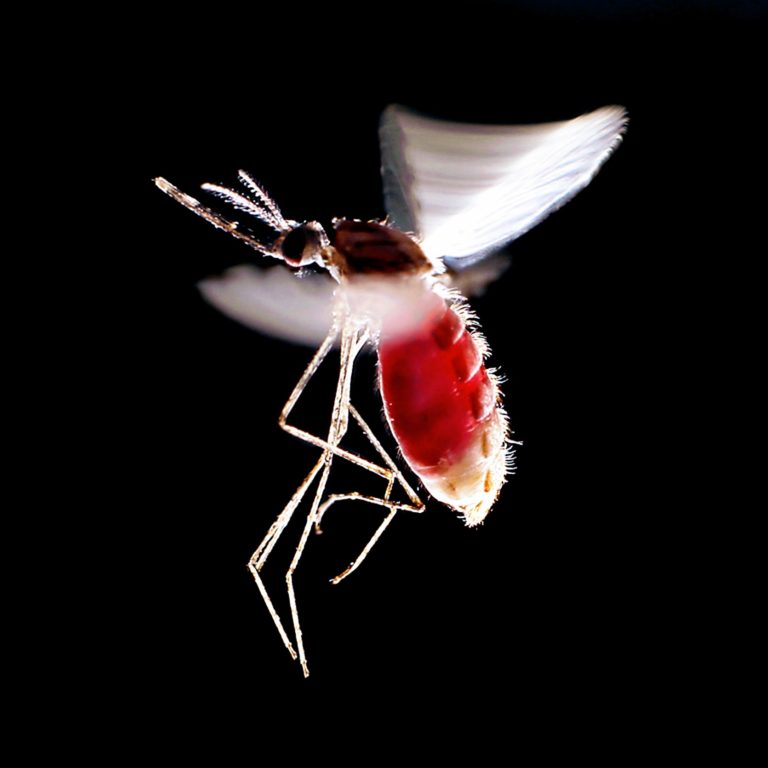
The Prince, the Pauper, and the Malarial Superstar (Plus a Sick Director)
January 27, 1937
Harrison Carroll
Evening Herald Express
Errol Flynn is back at work on The Prince and the Pauper after days out with the flu and malaria.
…
January 28, 1937
Elizabeth Yeaman
Hollywood Citizen News
The Prince and the Pauper has been plagued by flu. Errol Flynn, the star, was out of the cast for two weeks with a combined attack of flu and malaria. He finally reported for work on Monday. And todaydirector William Keighley took to his bed with flu. So William Dieterle has been rushed in to complete the picture which should be finished within another week.
…
HISTORY AND DOCUMENTATION OF ERROL’S MALARIA
Part 1
Errol’s Malaria
Part II
Bitten in New Britain
Part III
Recurrences
— Tim
On the 71st Anniversary of His Passing
January 22, 1950
…
Alan Hale was one of Hollywood’s greatest character actors. Mostly remembered for his performances with Errol Flynn, he also played in films supporting Lon Chaney, Wallace Beery, Douglas Fairbanks, James Cagney, Clark Gable, Cary Grant, Humphrey Bogart, and Ronald Reagan.
He appeared with Errol in all the following:
The Prince and the Pauper (1937)
The Adventures of Robin Hood (1938)
The Sisters (1938)
Dodge City (1939)
The Private Lives of Elizabeth and Essex (1939)
Virginia City (1940)
The Sea Hawk (1940)
Santa Fe Trail (1940)
Footsteps in the Dark (1941)
Desperate Journey (1942)
Gentleman Jim (1942)
Adventures of Don Juan (1948)
..And in Thank Your Lucky Stars (1943), but not together.
From one of the many top shelf posts of TCM TomJH of the TCM Message Board – excerpted discussions regarding Alan Hale’s work and personal relationship with Errol Flynn, and a segment regarding EFB Author Steve Hayes.
“Alan Hale, Character Actor Support Par Excellence”
December 17, 2017 in General Discussions
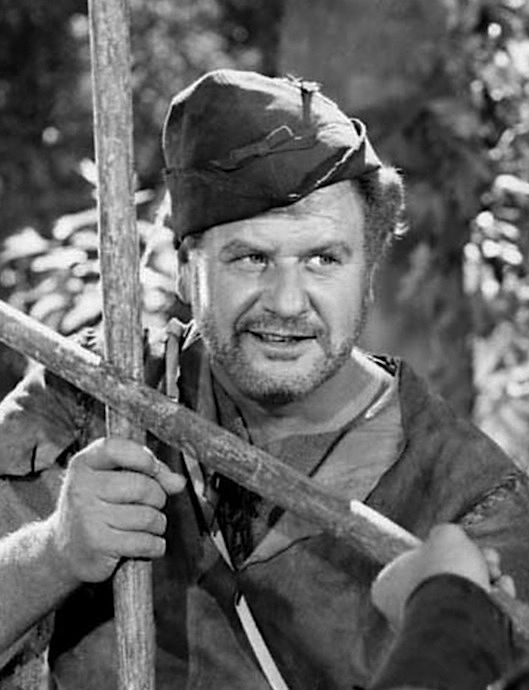
“Flynn and Hale have such a great camaraderie in their films together and you can tell that they really were friends in real life.
Hale brought so much to the Flynn films beyond just his performance. You always had the feeling of observing two friends having fun together.”
Gentleman Jim
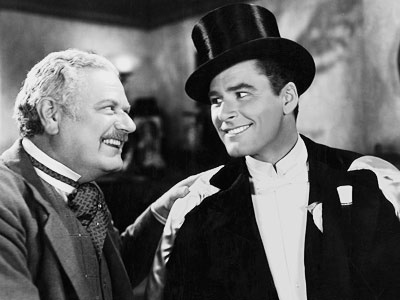
…
“Gentleman Jim (1942). A father once again, this time to Flynn’s boxing dandy Jim Corbett in another Walsh-directed turn-of-the-century affair. Hale has a riot in this film, constantly laughing, throwing phantom punches in the crowd at one of his son’s fights, dancing an Irish jig with the family and getting drunk at a celebration party following Corbett’s triumph in the ring over the legendary John L. Sullivan. At one point Hale is seen staggering home, staring at his outstretched hand, having just shaken the hand of the great Sullivan. When asked by his son what he’s going to do with that hand now, Hale emphatically proclaims, “I’m not even going to wash it!
I couldn’t find a photo of this moment on Google Images, but one of my favorite parts of Gentleman Jim is the end at the wild celebration party. A chair is thrown through the glass doors, then Hale opens the door. His hair is all mussed and with his eyes and mouth opened wide, and he yells “GIVE ‘EM ROOM! GIVE ‘EM ROOM!”
…
The Sea Hawk
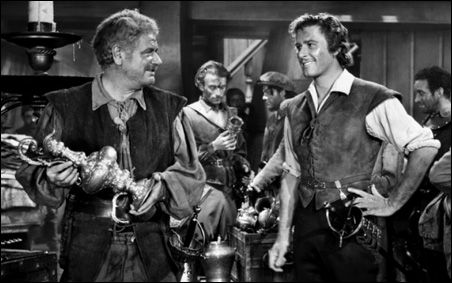
…
“I also like Alan Hale with Flynn in The Sea Hawk. At one point, both men (along with the rest of the crew on their ship) are captured and forced into being galley slaves. Flynn and Hale orchestrate a plan to steal a knife from the guard and overtake him, take over the ship and free their crew.
One of Hale’s trademarks was his great “jaw drop” double-take. Watching him and Flynn on screen together was pure joy. That’s one thing that is missing from today’s films – chemistry. We have great actors, but it doesn’t appear that anybody is really having any fun up on the screen any more.”
…
The Adventures of Don Juan

“There are some scenes between them that I always love to watch in their final film together, Adventures of Don Juan. Hale plays Don Juan’s servant, Leporello, always trying to assist the Don and extricate him from sticky situations, many of them of a humourous nature. But even though his character is a servant Hale plays the role like a friend.
When Flynn is interrupted in his attempted seduction of a woman by her irate husband he leaps from a balcony to the ground below, where Hale awaits dozing. They look a each other (oh, they have been in this same situation so many times before) and there is a simple two word exchange between them.
“Husband,” Flynn’s Don Juan says, a little out of breath.
“Horses,” Hale replies pointing in their direction where they both begin to run.
“One of my favourite little moments between them occurs towards the end. They are sitting at a table, hiding out in a cantina from the military which is hunting for Don Juan with prison, or worse, awaiting him if captured.
Flynn says he must leave Spain but he doesn’t want Hale to accompany him to a life of uncertainty.
“Do you think I would let you go roaming about the universe without me?” Hale says, “I’m going with you!”
“And if I order you to stay?” Flynn says.
“Then I shall disobey you!” Hale emphatically replies.
There’s a lovely closeup of Flynn’s face, a look of warmth in his eyes, as he reaches across the table and briefly places his hand with affection on top of Hale’s. Hale smiles. Done! They will stay together through thick and thin.
What always helps to make this little moment work so well is that it seems a reflection of the friendship that it existed between the two actors.”
…
A reference to EFB Author Steve Hayes was made as follows in this TCM Message Board Post:
“Steve Hayes is a writer, part time adventurer, who wrote two books about his Hollywood experiences called Googies Coffeeshop to the Stars. For a month he lived in a room in Errol Flynn’s Mulholland home, and got to know the actor quite well, continuing to see him off and on afterward for a while. Among other things, he mentioned that Flynn went into a period of depression due to Alan Hale’s death.”
— Tim
It’s been reported that Errol had a daughter before he married Tiger Lil’. What was her name, who was her mother, and where was she born????

An island named after this island was involved…

…
Her first name means “Lily” in Hebrew…
(This clue added Sunday morning, 8am, January 17, 2021)
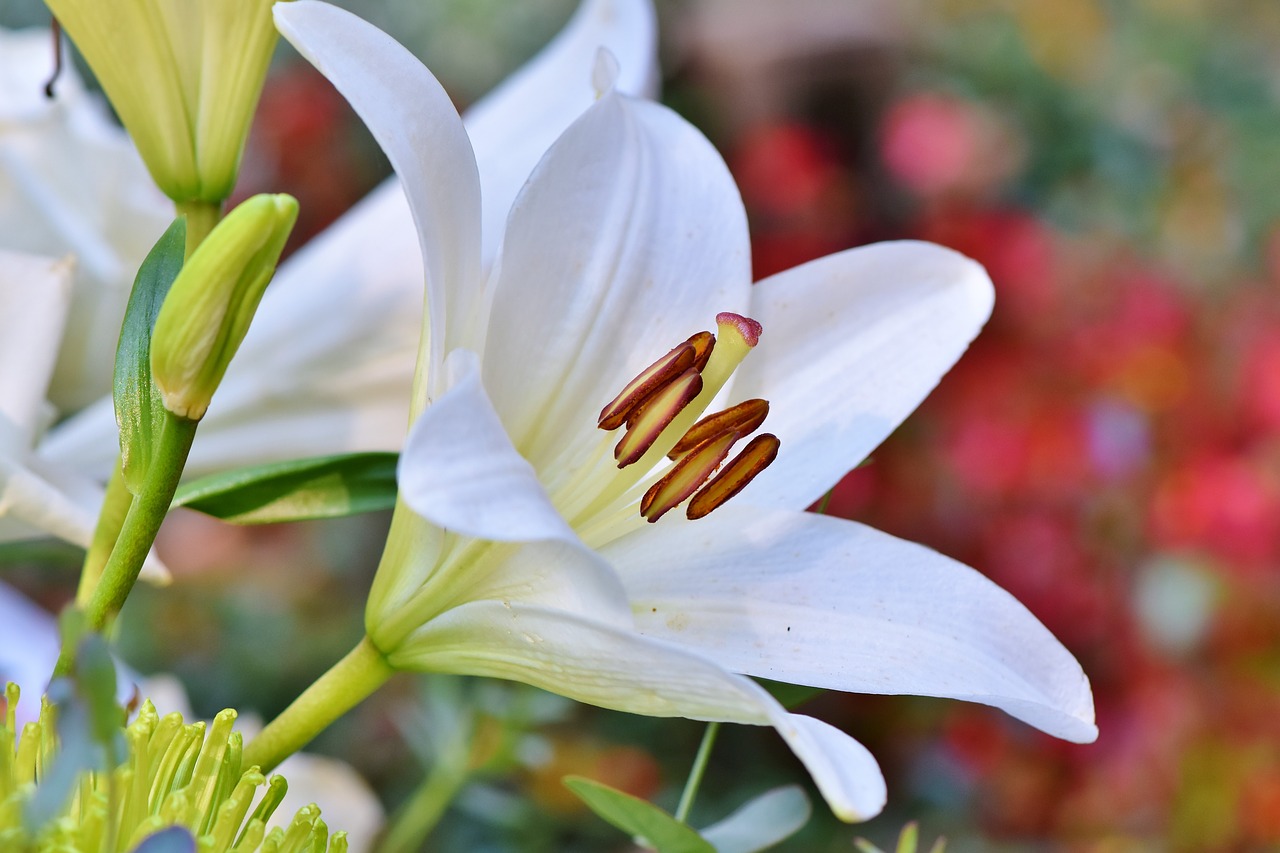
…
Her mother was from an island named on this map.
(This clue added Sunday morning, 9am, January 17, 2021)

…
Humming this will help yield her name…
It’s by one of America’s greatest songwriters…
(This clue added Sunday morning, 11:48 am, January 17, 2021)
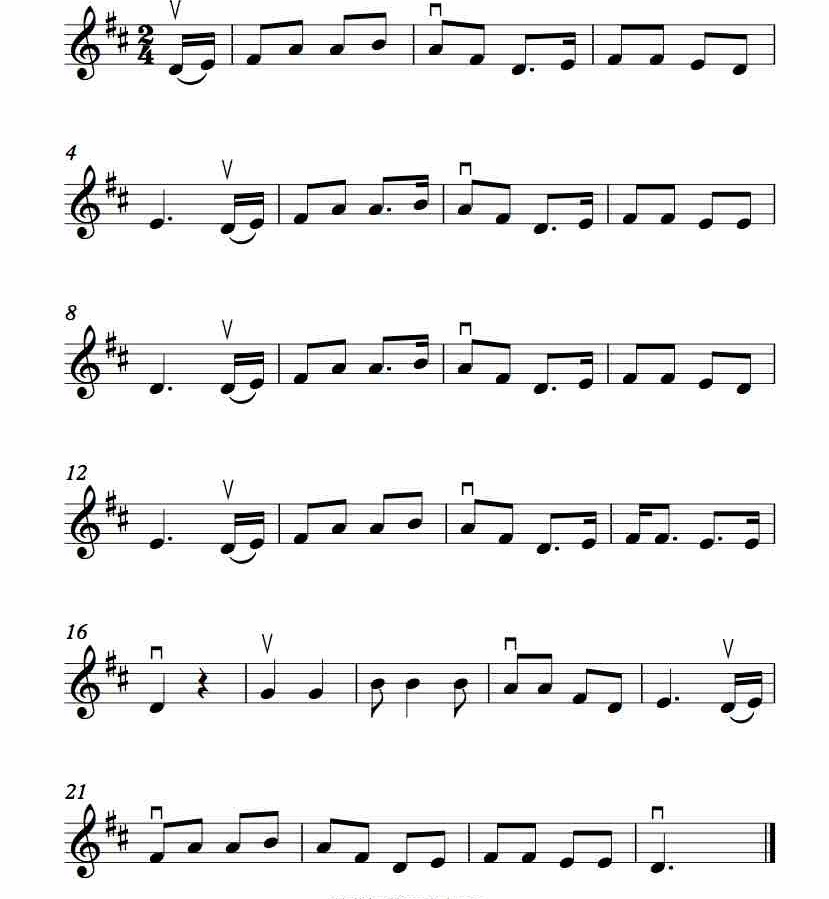
…
The mother was from Selapiu Island, near New Hanover Island. (See the map above)
After the birth of the daughter, she went to Ranmalek Mission and disappeared during World War II.
(This above set of clues added Sunday evening, 6:30 pm, January 17, 2021)
…
A man named Wilkie Wilkin is said to have cared for the mother and daughter at a copra plantation, apparently beginning after Errol left for England. He is thought to have been captured at Albatross Passage by the Japanese following their famous air raids on PNG during January 1942. His name is on the plaque above. …It is not nown to me, nor clear from the accounts I read, that Errol ever knew of the pregnancy, never mind that it allegedly resulted in a daughter.
…
The daughter, _________, was said to have strikingly stood out in PNG because of her complexion and beauty.
(This above set of set of clues added Sunday evening, 6:45 pm, January 17, 2021)
…
Years ago, super Flynn-researcher Tina Nyary published the below image, stating “Here is an image of what most likely could have been Tuperselai”. I am not certain, but, if Errol did have a daughter in PNG, there’s a good chance the mother would have been Tuperselai, who he very highly praises in MWWW:
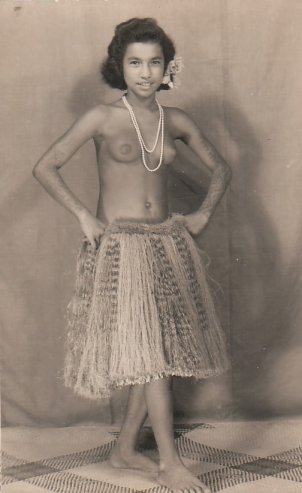
(This above photo was added Tuesday morning, 11am, January 19, 2021)
— Tim
January 13, 1939
Star-Studded Traffic Trial in Beverly Hills
LA Evening Herald Examiner
It will look like a roll call of Hollywood male stars in PoliceJudge Charles J. Griffin’s Beverly Hills court late today.
The occasion will be the hit-run driving trial of John W. Myers, former owner of the La Conga, Hollywood night spot.
Among those who have been subpoened as witnesses in behalf of Meyers are Errol Flynn, Bruce Cabot and Walter Pidgeon, all of whom either saw the accident or talked to Myers immediately after it occurred, according to attorney Richard Cantillon, representing Meyers.
Meyers is charged with having fled the scene of an accident involving his automobile and another car driven by George v. Tribe.
Tribe’s wife, Darlene, and his mother-in-law, Mrs. Elizabeth Thorpe, all were seriously injured in the accident, it is charged.
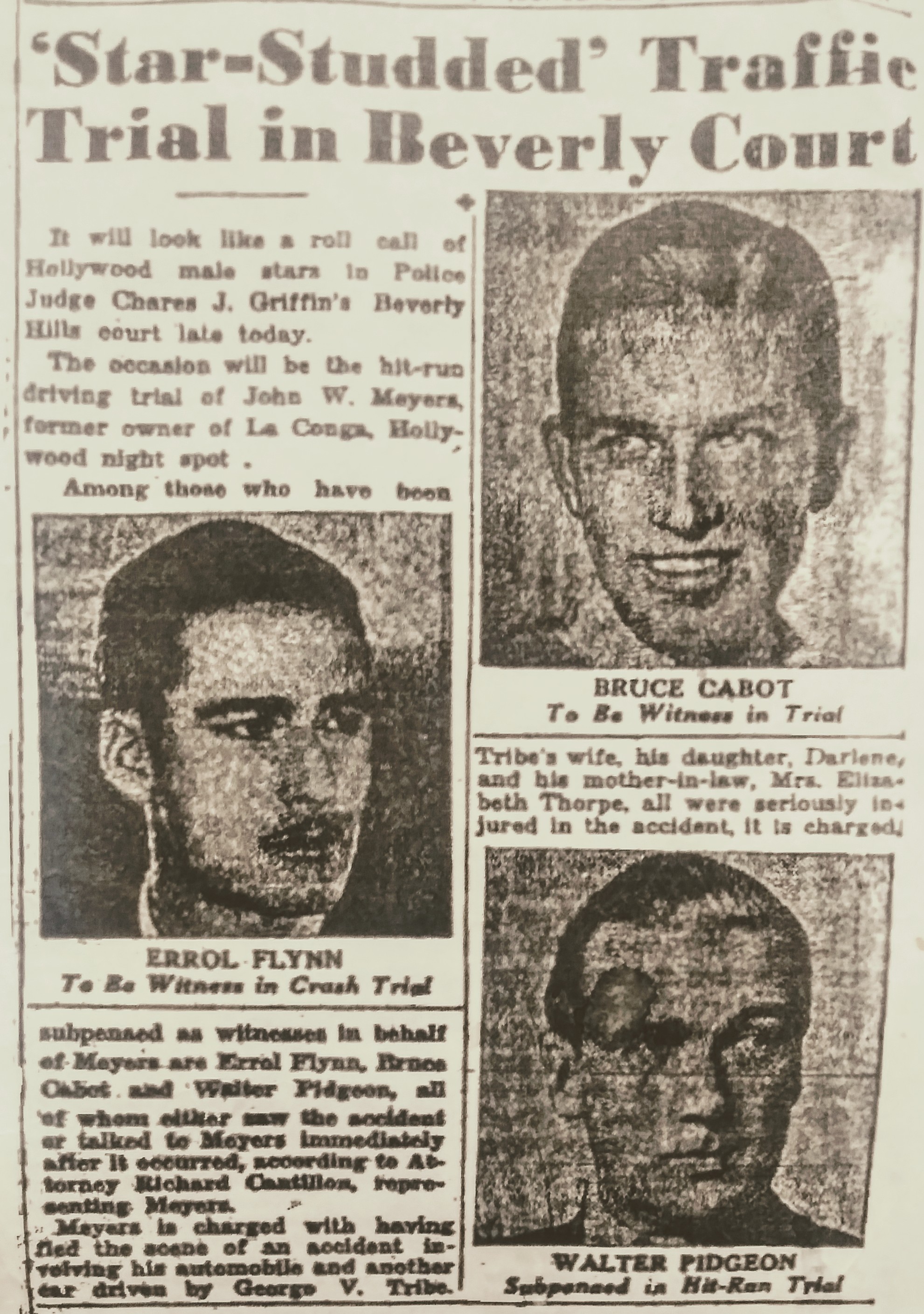
— Tim
December 22, 1938
Basil Rathbone today seemed destined to play another of the “heavy” roles that have made im one of the screen’s most famed menaces. Hal Wallis i negotiating a deal with Rathbone, wherein he would play the part of Lord Wolfington in The Sea Hawk.
Errol Flynn already has been announced for the star role in the picture, which will be Seton I. Miller’s revision of the Raphael Sabatini thriller. Rathbone, as Queen Elizabeth’s advisor, was in mind when Miller wrote the script.
If the deal goes through, this will be the fourth picture in which Flynn and Rathbone have played together. The other three are Captain Blood, Robin Hood, and The Dawn Patrol. Michael Curtiz probably will direct The Sea Hawk. He piloted Captain Blood.
…
Has any fencing menace ever fought better, or died better, than Basil Rathbone? I think not.
(Certainly not Henry Daniell!)
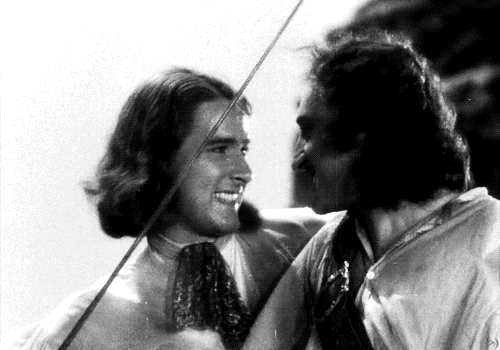
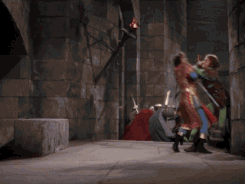
— Tim